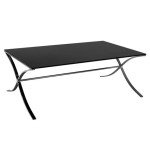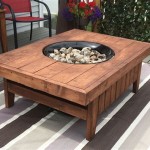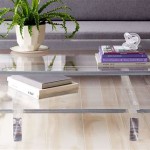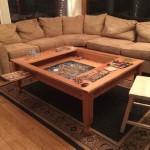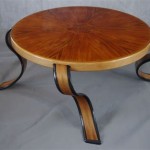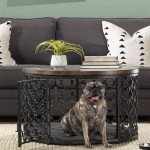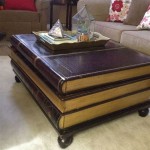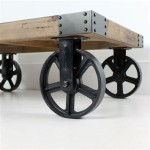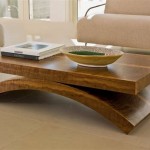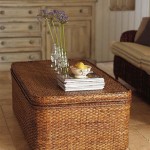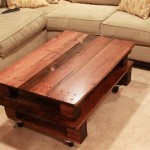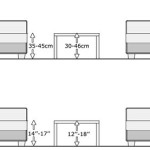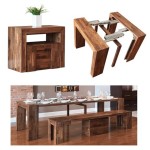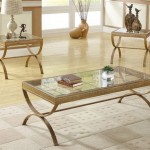How To Make A Table Out Of Pallet Wood
Creating a table from pallet wood offers a cost-effective and environmentally friendly way to furnish a space. This process involves several steps, from sourcing materials to finishing the final product. Careful execution of each stage ensures a sturdy and aesthetically pleasing table.
Acquiring and Preparing the Pallets: The first step involves sourcing pallets. Check local businesses, construction sites, or recycling centers for discarded pallets. Ensure the chosen pallets are heat-treated (HT) rather than chemically treated (MB), indicated by an "HT" stamp. Avoid pallets with a strong chemical odor or stains, which could indicate harmful treatments. Once acquired, pallets should be cleaned using a stiff brush, soap, and water to remove dirt and debris.
Dismantling the Pallets: Dismantling pallets requires careful execution to preserve the wood's integrity. Using a pry bar and hammer, carefully separate the planks from the supporting structure. Avoid using excessive force, which can split or crack the wood. A reciprocating saw can also be used, but requires careful handling to avoid damaging the wood. Once disassembled, remove any remaining nails or staples using a hammer and nail puller.
Planning and Measuring: Before assembling the tabletop, determine the desired dimensions of the table. This involves considering the intended use and available space. Measure and mark the recovered planks according to the planned dimensions. Consistency in length and width is crucial for a level and stable tabletop.
Cutting and Shaping the Wood: Using a circular saw or hand saw, cut the planks to the marked lengths. Ensure all cuts are straight and precise. If a rustic look is desired, the planks can be left in their natural state. However, for a smoother finish, sanding is recommended. Use a power sander or sanding block with progressively finer grits of sandpaper, starting with a coarser grit (e.g., 80-grit) and moving to finer grits (e.g., 220-grit).
Assembling the Tabletop: Once the planks are prepared, assemble the tabletop. Lay the planks side by side in the desired arrangement, ensuring they are flush. Use wood glue between the planks to create a strong bond. Then, secure the planks together using support boards underneath. These support boards run perpendicular to the tabletop planks and are attached using screws. Ensure the screws are countersunk to prevent scratching surfaces. Alternatively, pocket hole joinery can be employed for a cleaner, more professional look, although this requires specialized tools.
Building the Table Base: The table base can be constructed from various materials and in various styles. Common options include using remaining pallet wood, repurposed metal pipes, or commercially available table legs. If using pallet wood, cut and assemble the wood to create the desired base structure. Ensure the base is sturdy and appropriately sized for the tabletop. Attach the base to the tabletop using screws and wood glue, ensuring a secure and stable connection.
Sanding and Finishing: Once the table is assembled, sand all surfaces thoroughly to achieve a smooth finish. Start with a coarser grit sandpaper and gradually move to finer grits. This removes any remaining splinters or rough patches. After sanding, remove all dust using a tack cloth or damp cloth.
Applying a Finish: The final step involves applying a finish to protect the wood and enhance its appearance. Various finishes can be used, including paint, stain, varnish, or sealant. The choice depends on the desired aesthetic and level of protection. Apply the chosen finish according to the manufacturer's instructions. Multiple coats may be required for optimal protection and appearance. Allow adequate drying time between coats.
Considerations for Different Table Types: The process outlined above provides a general framework. Specific steps may need adjustment depending on the type of table being built. A coffee table, for instance, will require a different base structure and dimensions than a dining table. Similarly, a side table may require different joinery techniques. Adapt the process to suit the specific needs of the project.
Safety Precautions: Throughout the entire process, prioritize safety. Wear appropriate safety gear, including safety glasses, gloves, and a dust mask, especially during cutting, sanding, and finishing. Work in a well-ventilated area when using finishes. Follow all manufacturer instructions for power tools and finishes. Proper safety precautions ensure a successful and injury-free project.
Choosing the Right Wood: While pallet wood offers a cost-effective option, careful selection is crucial. Ensure the wood is free from rot, decay, and insect damage. Different types of wood may be present in pallets, and selecting pieces with similar characteristics will create a more cohesive final product. Consider the wood's density and hardness, especially for tabletops that will experience frequent use.
Alternative Joining Methods: Besides using screws and glue, alternative joining methods can enhance the table's aesthetics and strength. Dowel joinery offers a strong and concealed joint, while mortise and tenon joinery provide exceptional strength and a traditional look. These methods require more advanced woodworking skills and specialized tools but can significantly elevate the finished product.

Pallet Table Easy To Make Diy

Diy Pallet Coffee Table No Power Tools
Wood Pallet Table Diy A Beautiful Mess

Diy Pallet Wood Coffee Table

Build A Diy Pallet Table With Herringbone Design Lovely Greens

Diy How To Make Table From Pallet Wood
Wood Pallet Table Diy A Beautiful Mess

How To Build An Outdoor Dining Table From Pallet Wood Crafted Work
Wood Pallet Table Diy A Beautiful Mess

Diy Pallet Coffee Table Again
Related Posts

